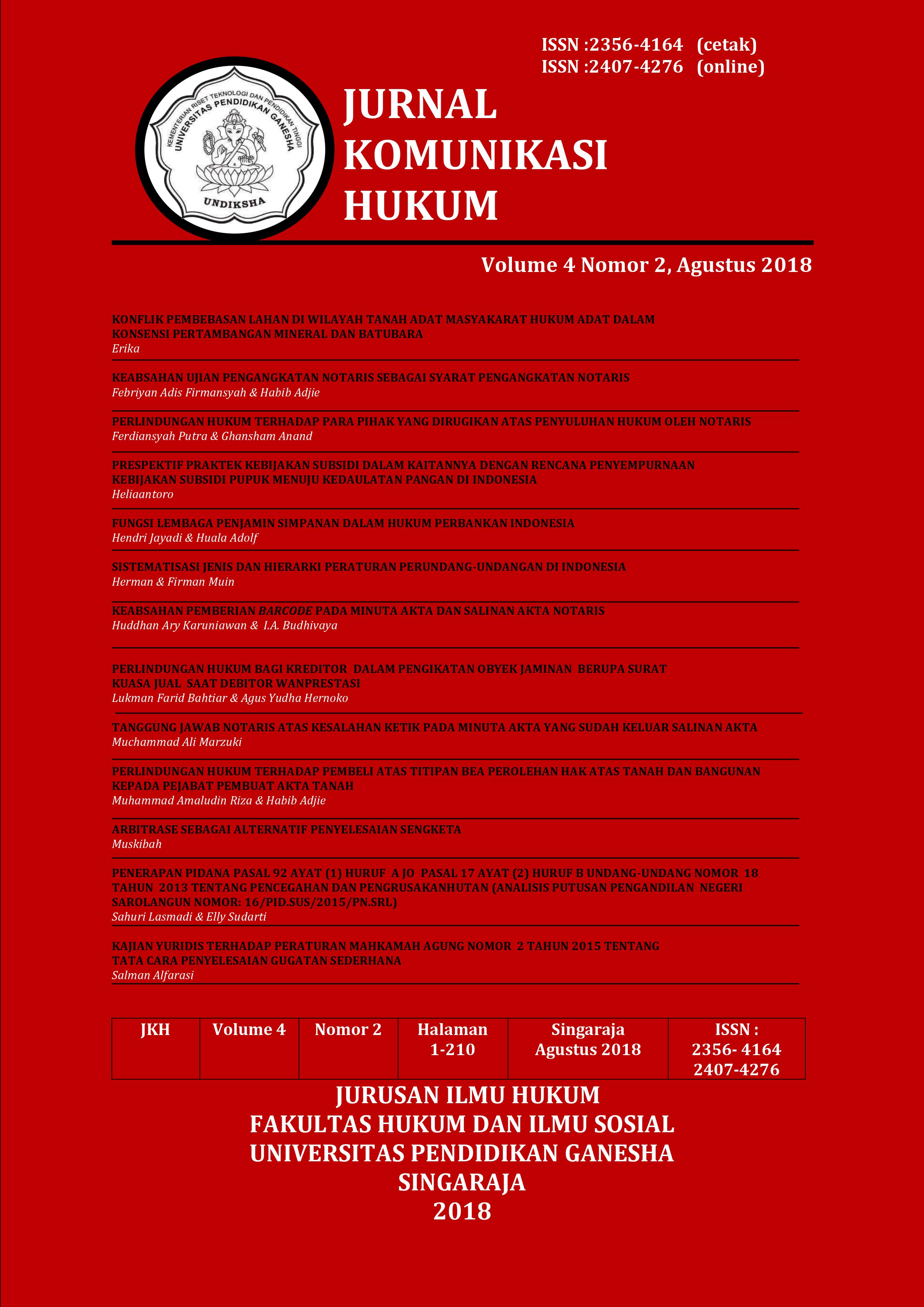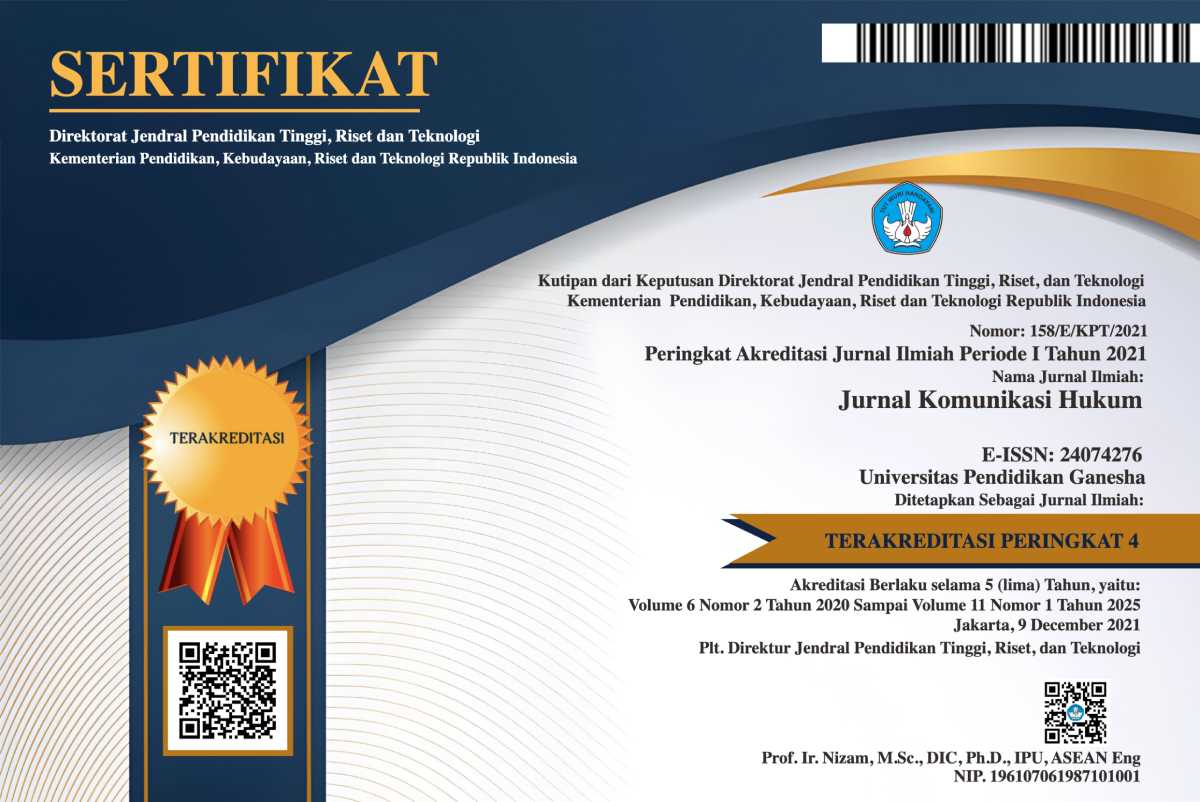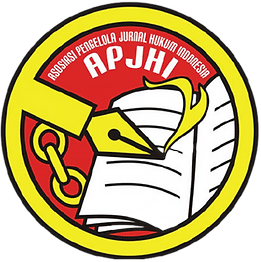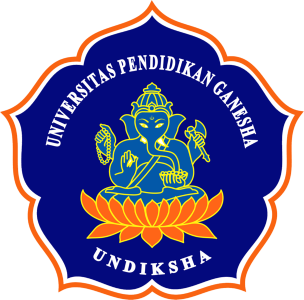GAGASAN PENERAPAN VICARIOUS LIABILITY DALAM KONSEP KUHP ATAS TINDAK PIDANA YANG DILAKUKAN ANAK
DOI:
https://doi.org/10.23887/jkh.v2i1.7279Abstract
Pendekatan penegakan hukum pidana Indonesia dewasa ini yang menekankan kepada pelaksanaan restorative justice membuka pintu-pintu baru untuk pembaharuan hukum pidana indonesia, penulis berpandangan bahwa sekat yang selama ini ada antara hukum pidana yang bersifat publik dan hukum perdata yang bersifat prifat bisa menjadi sebuah jembatan jika di manfaatkan secara baik demi pembaharuan hukum pidana tersebut. Tindak pidana yang dilakukan oleh anak yang secara hukum di bawah umur untuk dikatakan cakap secara hukum, sering kali terjadi karena adanya pergeseran konstruksi sosial di masyarakat yang mendorong anak melakukan tindak-tindak pidana tersebut. Permasalahan tindak pidana oleh anak tersebut akan membawa pada pertanyaan bagaimana ia akan mempertanggungjawabkannya, pun hukum pidana sudah memiliki konstruksi penegakan hukum pidana anak dalam sistem hukumnya, penulis masih merasa penegakan hukum pidana anak masih dapat dikembangkan dalam konsep pembaharuan hukum pidana, dan penulis datang dengan sebuah gagasan tentang pertanggungjawaban pengganti atau yang dalam bahasa aslinya dikenal sebagai vicarious liability. Vicarious liability adalah pertanggungjawaban menurut hukum seseorang atas perbuatan salah yang dilakukan oleh orang lain (the legal responsibility of one person for the wrongful acts of another). Secara singkat vicarious liability sering diartikan sebagai “pertanggungjawaban pengganti”. Kata kunci : restorative justice, hukum pidana, vicarious liabilityDownloads
Published
2016-01-07
How to Cite
Purnama Putera, I. N. H. (2016). GAGASAN PENERAPAN VICARIOUS LIABILITY DALAM KONSEP KUHP ATAS TINDAK PIDANA YANG DILAKUKAN ANAK. Jurnal Komunikasi Hukum (JKH), 2(1). https://doi.org/10.23887/jkh.v2i1.7279
Issue
Section
Articles
License
Authors who publish with this journal agree to the following terms:- Authors retain copyright and grant the journal right of first publication with the work simultaneously licensed under a Creative Commons Attribution License that allows others to share the work with an acknowledgement of the work's authorship and initial publication in this journal.
- Authors are able to enter into separate, additional contractual arrangements for the non-exclusive distribution of the journal's published version of the work (e.g., post it to an institutional repository or publish it in a book), with an acknowledgement of its initial publication in this journal.
- Authors are permitted and encouraged to post their work online (e.g., in institutional repositories or on their website) prior to and during the submission process, as it can lead to productive exchanges, as well as earlier and greater citation of published work (See The Effect of Open Access).
Authors who publish with this journal agree to the following terms:
- Authors retain copyright and grant the journal right of first publication, with the work [SPECIFY PERIOD OF TIME] after publication simultaneously licensed under aCreative Commons Attribution License that allows others to share the work with an acknowledgement of the work's authorship and initial publication in this journal.
- Authors are able to enter into separate, additional contractual arrangements for the non-exclusive distribution of the journal's published version of the work (e.g., post it to an institutional repository or publish it in a book), with an acknowledgement of its initial publication in this journal.
- Authors are permitted and encouraged to post their work online (e.g., in institutional repositories or on their website) prior to and during the submission process, as it can lead to productive exchanges, as well as earlier and greater citation of published work (See The Effect of Open Access).












